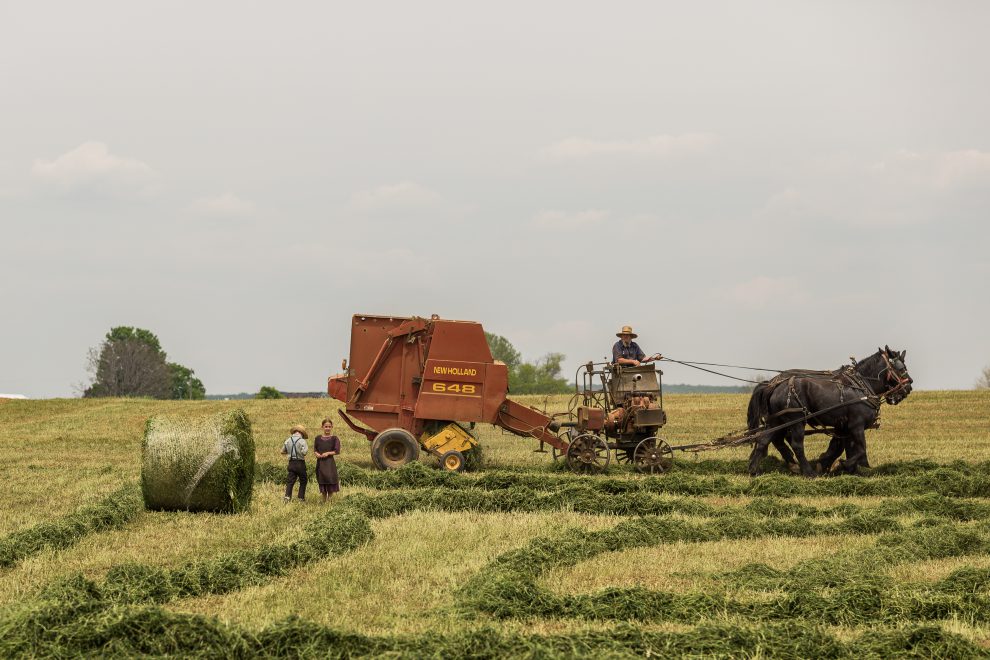Yuval Noah Harari scrive Sapiens: A Brief History of Humankind. Superdivertente la storia dell’agricoltura dal punto di vista del grano (via Kottke):
Think for a moment about the Agricultural Revolution from the viewpoint of wheat. Ten thousand years ago wheat was just a wild grass, one of many, confined to a small range in the Middle East. Suddenly, within just a few short millennia, it was growing all over the world. According to the basic evolutionary criteria of survival and reproduction, wheat has become one of the most successful plants in the history of the earth. In areas such as the Great Plains of North America, where not a single wheat stalk grew 10,000 years ago, you can today walk for hundreds upon hundreds of miles without encountering any other plant. Worldwide, wheat covers about 870,000 square miles of the globe’s surface, almost ten times the size of Britain. How did this grass turn from insignificant to ubiquitous?
Wheat did it by manipulating Homo sapiens to its advantage. This ape had been living a fairly comfortable life hunting and gathering until about 10,000 years ago, but then began to invest more and more effort in cultivating wheat. Within a couple of millennia, humans in many parts of the world were doing little from dawn to dusk other than taking care of wheat plants. It wasn’t easy. Wheat demanded a lot of them. Wheat didn’t like rocks and pebbles, so Sapiens broke their backs clearing fields. Wheat didn’t like sharing its space, water and nutrients with other plants, so men and women laboured long days weeding under the scorching sun. Wheat got sick, so Sapiens had to keep a watch out for worms and blight. Wheat was attacked by rabbits and locust swarms, so the farmers built fences and stood guard over the fields. Wheat was thirsty, so humans dug irrigation canals or lugged heavy buckets from the well to water it. Sapiens even collected animal faeces to nourish the ground in which wheat grew.
The body of Homo sapiens had not evolved for such tasks. It was adapted to climbing apple trees and running after gazelles, not to clearing rocks and carrying water buckets. Human spines, knees, necks and arches paid the price. Studies of ancient skeletons indicate that the transition to agriculture brought about a plethora of ailments, such as slipped discs, arthritis and hernias. Moreover, the new agricultural tasks demanded so much time that people were forced to settle permanently next to their wheat fields. This completely changed their way of life. We did not domesticate wheat. It domesticated us. The word ‘domesticate’ comes from the Latin domus, which means ‘house’. Who’s the one living in a house? Not the wheat. It’s the Sapiens.
L’opulenza della vita umana nell’età della pietra, prima dell’agricoltura, è un vecchio tema di Marshall Sahlins. Harari aggiunge un motivo per definire l’impoverimento della rivoluzione neolitica. Di certo, questo si è tradotto in un aumento esponenziale della quantità di umani che popolano il pianeta. Ma la prospettiva di Harari aggiunge una dimensione alla discussione: scegliendo di moltiplicarsi a ogni costo, gli umani hanno peggiorato le condizioni degli individui a favore del sistema economico che ne supporta la collettività? Certo, hanno poi imparato a mitigare gli effetti negativi del primo passaggio del progresso adattandosi con ulteriore progresso. Ma forse possiamo dire che è un inseguimento tra tecnologia che trasforma quantitativamente e tecnologia che adatta qualitativamente.





Sempre sul tema consiglio questo articolo molto interessante del Prof. Salamini, ex-Presidente della Fondazione Mach: http://www.lescienze.it/archivio/articoli/2014/07/02/news/alle_origini_dell_eden-2199654/
grazie!
È lo stesso ragionamento fatto per cani e gatti